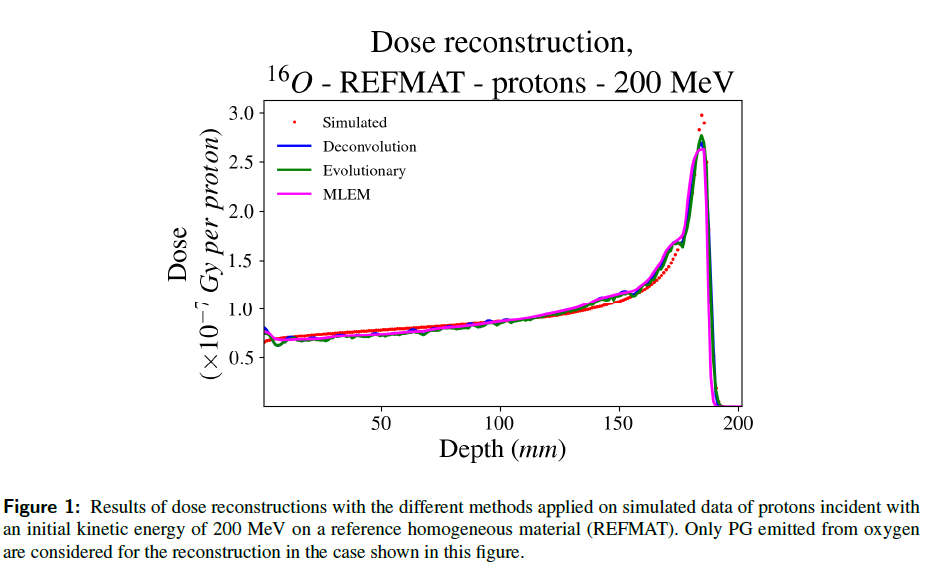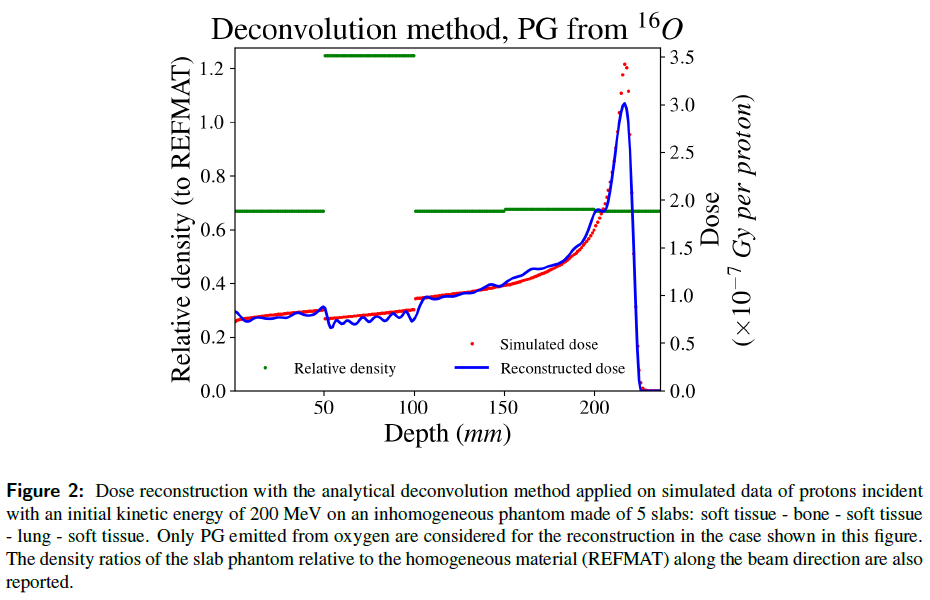Evaluation of strategies for dose reconstruction from prompt-gamma radiation in proton therapy
PO-1814
Abstract
Evaluation of strategies for dose reconstruction from prompt-gamma radiation in proton therapy
Authors: Beatrice Foglia1, Chiara Gianoli1, Takamitsu Masuda2, Thomas Bortfeld3, Joost Verburg3, Katia Parodi1, Marco Pinto1
1Ludwig-Maximilians-Universität (LMU), Experimental Physics - Medical Physics, Garching bei München, Germany; 2National Institutes for Quantum Science and Technology, -, Chiba, Japan; 3Massachusetts General Hospital (MGH), Radiation Oncology, Boston, USA
Show Affiliations
Hide Affiliations
Purpose or Objective
Clinical exploitation of the favourable characteristics of protons in cancer therapy is limited by a high sensitivity to range uncertainties. The distribution of prompt-gamma (PG), emitted after nuclear interactions of protons with tissue, could be used for in vivo verification. The most desirable comparison in terms of dose distribution requires dose reconstruction. This work aims at tackling the reconstruction of the actual delivered dose from the PG signal.
Material and Methods
Different strategies have already been proposed to reconstruct the dose from a distribution of detected secondary particles, mostly positron emitters (PE). Among them, very promising investigated methods are the analytical deconvolution[1], the evolutionary algorithm[2][3] and the ML-EM algorithm[4][5]. These techniques are based on the forward filtering approach, firstly developed by Parodi and Bortfeld[6] for PET monitoring and recently extended to PG monitoring by Pinto et al.[7] The methods were mostly applied to PE distributions. Only the evolutionary algorithm has been applied on PG distributions so far, and only on homogeneous targets[2]. Within this work, the feasibility of the application of the mentioned techniques to PG distributions was assessed with simulations of protons interacting with homogeneous (fig.1) and inhomogeneous (slab) phantoms (fig.2). The accuracy of the reconstructed curves from simulations were evaluated according to different metrics. A first step towards comparison to measured data has been made with the irradiation of a head phantom at the Francis H. Burr Proton Therapy Center (MGH, Boston, USA), where PG data were acquired with a PG spectroscopy detector prototype[8].


Results
For all the methods applied to simulations to the homogeneous case, the γ(3%/3mm) passing rate is always around or above 90%; at other thresholds (2%/2mm, 1%/1mm) is more than 80%. The ΔR₈₀, absolute difference between the positions of the 80% of the dose maximum in the distal fall-off for the simulated and reconstructed curves, is always less than 0.5 mm. The ΔR₁₀, similarly defined, is always less than 0.1 mm for the deconvolution and the evolutionary algorithms, and less than 1.5 mm for the ML-EM. It was also shown that the methods are sensitive to detect range shifts of the order of 1 mm.
Conclusion
The final aim of this work is the comparison of the evaluated dose reconstruction approaches as part of their applicability to real-time adaptive particle therapy. Dose reconstruction accuracy, computation time and integration into clinical workflow will be considered based on in silico studies using both homogeneous and heterogeneous phantoms and patient data and on measurements in a 3D printed head phantom.
This work is performed as part of the RAPTOR project, funded by the EU’s Horizon 2020 MSCA, Grant Agreement No. 955956.
1.Phys.Med.Biol.56,2011
2.Phys.Med.Biol.61,2016
3.Phys.Med.Biol.64,2019
4.Phys.Med.Biol.64,2019
5.Phys.Med.Biol.65,2020
6.Phys.Med.Biol.51,2006
7.Phys.Med.Biol.65,2020
8.Phys.Med.Biol.63,2018